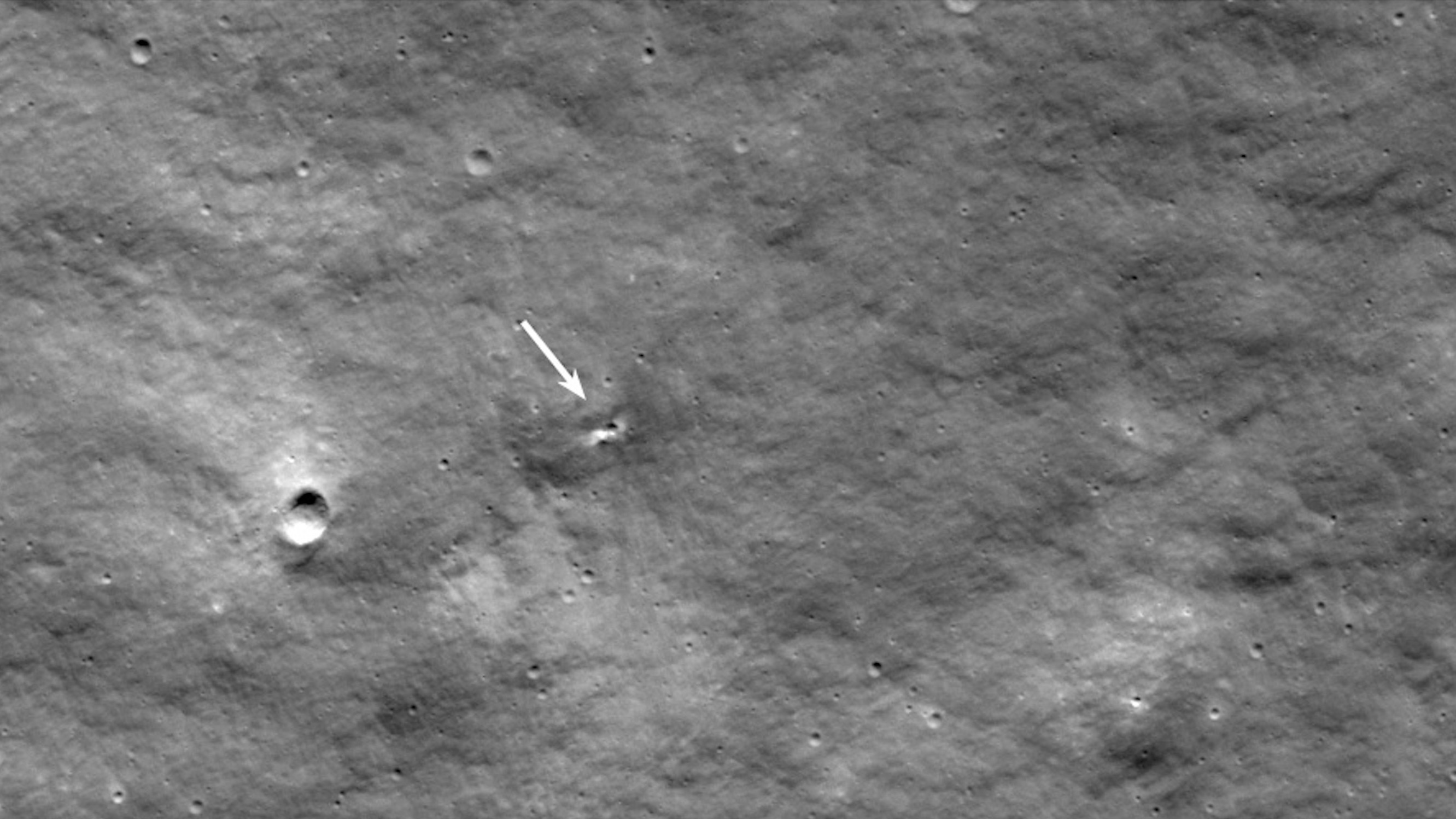Russia pinpoints cause of Luna-25 moon lander's failure

Russia says it knows what caused the failure of its first moon shot in nearly 50 years.
The Luna-25 lander — the first Soviet or Russian moon probe since Luna-24 in 1976 — crashed into the moon on Aug. 19, during a maneuver designed to set up a touchdown attempt near the lunar south pole two days later.
Officials with Roscosmos, Russia's federal space agency, announced a proximate cause for the mishap shortly thereafter: Luna-25's engines fired for 127 seconds during the burn instead of the scheduled 84.
Now, a likely ultimate cause has come into view. It turns out that an onboard control unit failed to turn the engines off because it wasn't receiving the necessary data from one of Luna-25's accelerometers, devices used to detect and measure motion. The accelerometer unit was not turned on, "due to the possible entry into one data array of commands with different priorities for their execution by the device," Roscosmos wrote in a Telegram post on Tuesday (Oct. 3). (The post is in Russian; translation by Google.)
"This did not allow, when issuing a corrective pulse, to record the moment the required speed was reached and to timely turn off the spacecraft propulsion system, as a result of which its shutdown occurred according to a temporary setting," the post added.
Related: Russia's Luna-25 lunar lander crashes into the moon
Luna-25 was designed to restart Russia's proud lunar exploration program, and the failure won't change that vision, according to Roscosmos officials and Russian President Vladimir Putin.
Breaking space news, the latest updates on rocket launches, skywatching events and more!
The nation has said it aims to launch three follow-on missions — Luna-26, Luna-27 and Luna-28 — in 2027, 2028 and no earlier than 2030, respectively. But those timelines could be accelerated in the wake of the Luna-25 crash, Roscosmos chief Yuri Borisov said at the 2023 International Astronautical Congress, which is being held this week in Azerbaijan.
"No one is going to fold their arms, and we are determined to continue the lunar program. Moreover, we are considering the possibility of shifting the Luna-26 and Luna-27 missions to the left in order to get the results we need as quickly as possible," Borisov said at the conference, Roscosmos wrote in another Telegram post (also in Russian; translation by Google).
Luna-25 aimed to be the first mission ever to land in the moon's south polar region, which is thought to be rich in water ice.
The Russian probe's failure allowed India's Chandrayaan-3 mission to claim that title. Chandrayaan-3 put a lander-rover duo down near the south pole on Aug. 23, just four days after Luna-25's crash.
Chandrayaan-3's success made India just the fourth nation ever to soft-land a spacecraft on the moon, after the Soviet Union, the United States and China.

Michael Wall is a Senior Space Writer with Space.com and joined the team in 2010. He primarily covers exoplanets, spaceflight and military space, but has been known to dabble in the space art beat. His book about the search for alien life, "Out There," was published on Nov. 13, 2018. Before becoming a science writer, Michael worked as a herpetologist and wildlife biologist. He has a Ph.D. in evolutionary biology from the University of Sydney, Australia, a bachelor's degree from the University of Arizona, and a graduate certificate in science writing from the University of California, Santa Cruz. To find out what his latest project is, you can follow Michael on Twitter.
